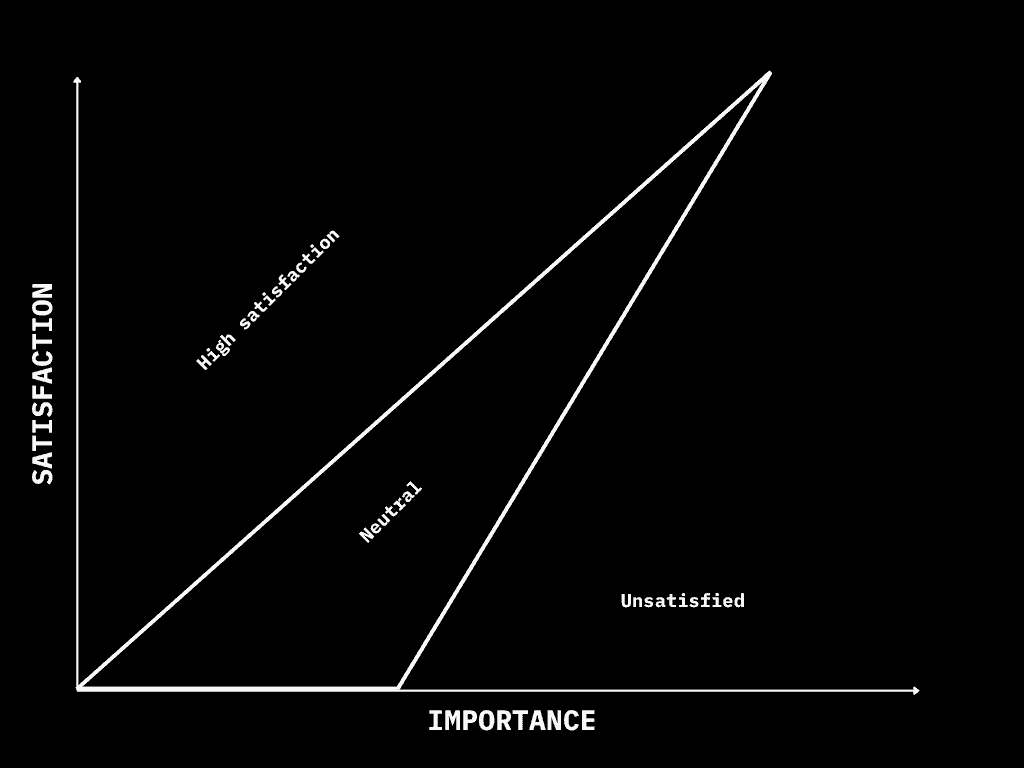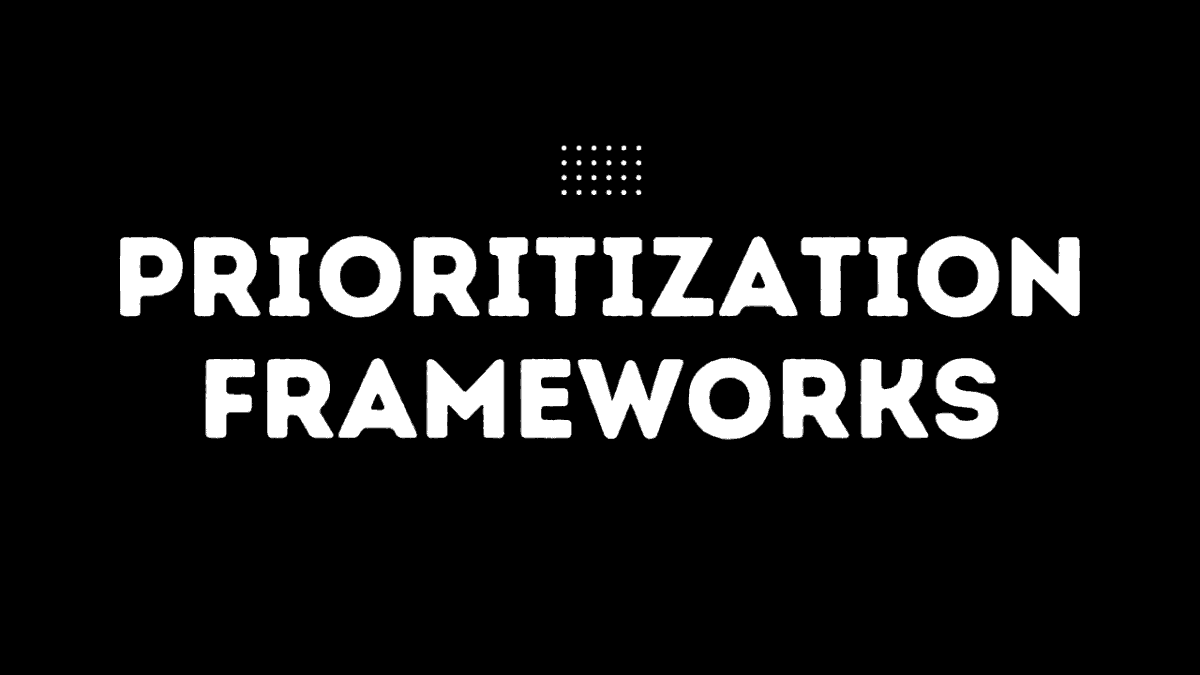Once the product strategy is in place, there is a prominent north star for product teams to achieve. However, multiple other factors are involved while making tactical decisions on what product features they need to prioritize. These include insights from user behaviour and user feedback, team inputs, current market scenarios, balancing out the long-term vs short-term business objectives and the team’s current state and abilities. One will also have to take into account any constraints that one face. Considering all these factors and more, product managers will have to decide on the best course for product development.
The key to prioritizing is to build decision-making frameworks that are suited to the needs of the business and the product. However, a few tested and established frameworks are already available to help product managers prioritize. This post intends to share a few of the most popular ones:
Value vs Effort
The value vs effort model is one of the simplest and most effective ways to get prioritization right. It uses the business quadrant model where you plot features on a graph from low value to high value on one axis and least effort to maximum effort on the other.

The features in the quadrant of high value/ low effort (see figure) will ideally be the set of features that provide the highest business value with the least effort and can be designated primary priority.
The secondary priority will be the features in the high-value/high-effort category, and they can be addressed once your primary priority items have been accomplished.
Features in the third quadrant, low-value/ low-effort, are features that can be addressed quickly but don’t push the needle much – can be taken up if the team has additional time and resources.
The final quadrant, which is the low-value/ high-effort, is something to ponder, is the effort to achieve them worth it? Does the team have the capacity to address these features, or can their effort be directed somewhere else which can provide better value? Based on this, these features can be de-prioritized or ignored.
This model can be a great way to involve all stakeholders and reach a common consensus. The definition of value and effort will change from stakeholder to stakeholder and help product managers understand them better. It will also enable product managers to understand dependencies and any strategic misalignment.
However, this model does not consider the market scenario, competition, user feedback, or insights. Once this exercise is completed, these are other parameters to consider and prioritize to develop a final roadmap.
RICE
Made famous by Intercom as their preferred framework for prioritization, RICE stands for Reach, Impact, Confidence and Effort.
The framework scores each feature or initiative on these 4 factors. (See table)
| REACH | IMPACT | CONFIDENCE | EFFORT |
| How many customers/ potential users will this feature affect in a given time period? | What kind of impact will this feature bring to individual users? Eg: How will this feature improve time spent on the app or engagement? | How confident is the product team of the impact and reach scores? Is there enough data to back these estimates, and are they accurate? | Map out the efforts of the multiple teams required to contribute to this feature. |
| Per month. per quarter | Use a numbered scale from 1 – 5 1 – Minimum impact 2 – Low Impact 3 – Medium Impact 4 – High impact 5 – Tremendous impact | Assign a percentage score – 90% and above – Highly confident – 75% – Medium confidence – 50% – low confidence | Effort can be estimated in man-days/ months per individual contributor. |
On arriving at a final score for each factor, apply the following formula to arrive at the feature’s RICE score.
The formula:

Running all features through the RICE formula provides a standardized score for each feature or initiative relative to their value to business impact and objectives. The set of features and initiatives can then be prioritized accordingly. The main factor of the RICE method is that it takes teams’ confidence into account to prioritize the roadmap. Like the value vs effort framework, it does not take into account external factors and dependencies, and they should also be accounted for in the final prioritization of the roadmap.
KANO or Bucket Model
The Kano or bucket model is purely based on the features that enable customer delight relative to the implementation (how well a customer need is met). The idea behind this model is that business outcomes are achieved when a more significant percentage of customers are delighted by the product experience. Hence the more resources spent on customer satisfaction have a direct impact on business outcomes. This model weighs heavily on having an aligned product strategy with business objectives. It also values customer insight on the product, there is a template Kano questionnaire that can help product managers achieve the ideal insight for this framework.
The model consists of 2 values plotted along the x-axis and y-axis. (see figure)

The horizontal axis (x-axis) shows the implementation values from not implemented to fully implemented, and the vertical axis(y-axis) shows the level of customer satisfaction – from dissatisfied to satisfied. There are 3 distinct buckets that features plotted against this graph:
- Must-have features: The bare minimum features customers expect to use the product.
- Performance features: These are features that move the needle for customers. Investing resources (time, money and manpower) into this bucket will increase customer satisfaction.
- Delightful: These are features that customers don’t expect but, when added, provide a wow experience for users. These are features that tremendously improve the word of mouth of a product and make users ambassadors for the product.
The Kano model places a lot of emphasis on customer insights, and product managers will have to build and collate several data points from surveys with your customers. This can be time-consuming and cumbersome for smaller teams and products with very large user bases. However, it also builds an understanding within product teams of what features actually impact customers, helping them prioritize them accordingly. It also helps with market predictions for the future.
Story Mapping
Story mapping is one of the most straightforward frameworks for prioritization. Usually used in early-stage products with smaller teams, it also focuses on the customer’s experience rather than stakeholder opinions.
Create a set of horizontal columns for each section of the product or each stage of the user’s journey through the product. Under each of these columns, list the set of features/ user stories for each column. Reorder them from top to bottom based on importance, with the most important story at the top just below the column label. A horizontal line drawn across each row creates a set of features from most important to least. The least important ones can form a product backlog to be tackled later.

This framework should ideally be worked on with multiple stakeholders. Its simplicity allows for easy product roadmap management, and its focus on user experience enables product teams to deliver for the users. It however, might not scale for bigger teams and more mature products as there are multiple factors at play, and the growth is incremental in mature teams and products.
Opportunity Scoring
The core idea behind the opportunity scoring or opportunity analysis framework is that customers use or purchase a product to get a specific job/job done. This framework, similar to the Kano model, uses customer insight to understand and prioritize features for product teams.
This model asks customers to rate the importance of features in the product which they deem essential but not satisfied with. The features that customers rate as highly important but are not satisfied with represent the opportunities for product teams to prioritize as they show the maximum benefit and impact for customers.
These can also be plotted on a graph with clear buckets for features with high satisfaction rates, neutral satisfaction and low satisfaction (priority features).

While opportunity scoring emphasizes customer satisfaction, product managers should also consider other factors that impact delivery in the real world. From resource mapping to other market scenarios, all of these should be weighed when coming up with a final prioritized roadmap.
These are just 5 of the more popular frameworks for prioritization amongst the many out there today. A few more popular ones to consider are the MoSCoW method, Buy a feature, Cost of Delay, and Affinity grouping.
While these frameworks are a great start to the prioritization of features and initiatives, it is also essential for product managers to understand the drawbacks and data points that are not considered in these frameworks and include them in the overall prioritization exercise. The frameworks are also a great starting point template to work on, and product managers can modify them to fit into their requirements and product development methods.
While a great starting point for prioritization of the roadmap, the frameworks should be a collaborative process that includes internal teams, management and the users. This will help create a well-prioritized roadmap aligned with user and business objectives. These exercises are a great way to align all stakeholders with the product strategy and direction, creating a more cohesive and collaborative unit working toward product success.

